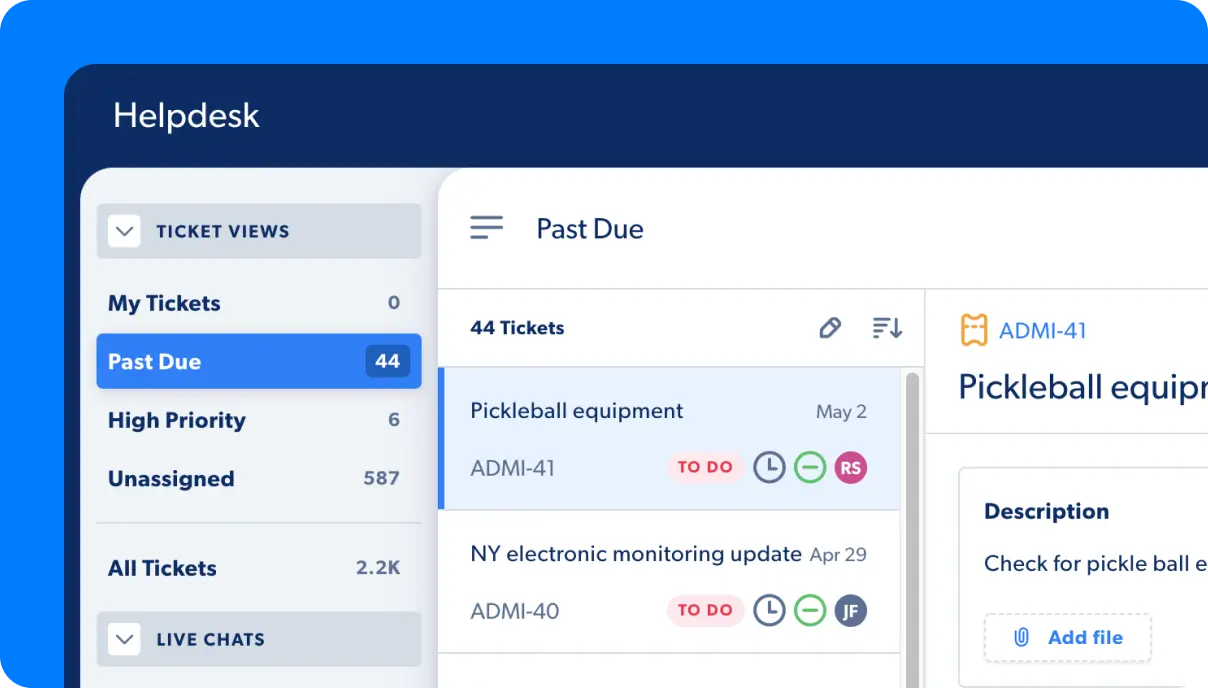With regard to technology in the workplace, the cloud computing ship has long set sail. Dating back more than 60 years, storing, creating, and modifying information via the internet isn’t a new concept. That said, SMBs and enterprises alike have only recently started to explore the true potential of cloud services.
Software as a service (SaaS) vendors from Silicon Valley to St. Louis (wink, wink) are releasing new cloud-based tools daily, each designed to improve productivity and security, as well as eliminate unnecessary costs. But despite the proliferation, not everyone’s on board.
If you’re reading this, chances are you’re dealing with some teammates who have their feet firmly planted on the dock (or maybe it’s you). Whether it be cost, scalability, or one of the other common objections highlighted here, don’t be dismayed.
No matter the industry, technology initiatives will always be met with some resistance. And that’s totally natural! As a team’s familiarity with legacy solutions grows, so too does their reluctance to adopt a new model.
With that in mind, feel free to refer back to this article whenever objections arise around cloud-based software solutions. Remind yourself and your team that even though change can be scary, it’s never good to overspend money and effort on dated technology.
With that said, let’s compare common cloud service objections with what the stats have to say.
Objection #1: Cloud services are too expensive!
- Example:
“Why should we pay for subscription services when we can just buy the hardware once?”
- The facts:
In reality, cloud drives are typically FAR less expensive on a long-term basis than local storage. Buying servers, and employing the IT staff to maintain and update them isn’t a cheap proposition.
And lest we forget, local storage requires SMBs to predict how much bandwidth they’ll need at any given time. The ebb and flow of business means thousands of organizations wind up with either too much or too little in the way of computing power.
By comparison, cloud drive services grow and shrink with your team. Hire a new employee? Including them in your knowledge permission structure is just a few keystrokes away.
Keep in mind:
- Leading local server solutions for SMBs can cost upwards of $2,000 each, if not more.
- Bad data costs businesses an average of $9.7 million annually.
- The average salary for an IT professional is over $62,000 annually.
Objection #2: Security will be compromised.
Example:
“What if there’s a data breach with our cloud storage provider? Isn’t it safer to just store data on our own servers?”
The facts:
In short, no. And here’s why: Though SMBs often employ skilled IT personnel, cloud vendors have entire full-time teams dedicated to security. Crucial security measures like robust encryption, as well as GDPR, CCPA, and SOC 2 compliance are readily available through leading service providers.
Compared to a subscription-based cloud drive, most local storage solutions are far more susceptible to data loss.
And thanks to the subscription model spreading the cost across each customer, SMBs win. Smaller orgs get enterprise-level data security at a fraction of the cost if they were to build a similar system in-house.
Lastly, some vendors have integrated SO, LDAP, and group & location-based permissions, making it easy to control what each team member can access. With the right tool in place, your team knows everything they need to know, and nothing more.
Keep in mind:
- According to the National Archives & Records Administration, 93% of businesses who lose their data center for more than 10 days file for bankruptcy within a year.
- Nearly 140,000 hard drives fail every week in the U.S alone.
- A Clark School study revealed that hackers attack systems every 39 seconds on average.
Objection 3: Cloud services are hard to navigate.
Example:
“I know where to find the information I need. What’s the benefit of complicating things with a migration to the cloud?”
The facts:
Slightly less common but no less valid than the other objections listed here, is that of navigation. Specifically for long-standing employees, the idea of having to learn a new system is justifiably intimidating.
Fortunately, leading vendors are lowering, not raising, the barrier to organizational knowledge. By integrating tools like enterprise search and guided conversations AI-powered cloud services make self-serving knowledge downright intuitive.
Through a chat portal embedded in their favorite communication tool, teams can mine tacit knowledge, crucial data, and dozens of connected apps for instant answers they need to effectively do their job. Instead of shoulder-tapping co-workers or searching multiple programs, a cloud drive consolidates fact-finding to a single user-friendly interface.
As an added bonus, some cloud drive providers have begun implementing human in the loop (HITL) tech. As the name implies, HITL routes inquiries that can’t be satisfied by your knowledge base to dedicated support staff. Thanks to ML, their response is automatically added to your org’s repository for future questions.
Keep in mind:
- The average employee switches between different applications 1,100 times per day.
- It takes an average of just over 23 minutes for employees to get refocused after having to navigate away from a task.
Objection 4: IT issues can’t be resolved in-house.
Example:
“What if something goes wrong? Isn’t it easier to coordinate fixes with our own IT staff?”
The facts:
While data failures are a very real and persistent threat, cloud storage vendors are one step ahead of the game. Instead of limiting data redundancy to a few local servers, SMBs can rely on their storage provider to backup critical information in multiple locations across the globe.
In fact, that level of redundancy is widely considered standard. And as we alluded to above, dedicated cloud providers will almost always offer more robust security protocols than a local solution.
After all, the best solution to potentially catastrophic data loss is to prevent it in the first place.
Keep in mind:
- According to the Ponemon Institute, data loss costs businesses over $3.6 million per incident.
- The University of Texas reports that 43% of businesses are forced to close immediately after a data breach.
- 20% of SMBs will suffer a critical data loss every 5 years.
Objection 5: Our org is too small for cloud services.
Example:
“Our business doesn’t generate enough data to take advantage of cloud computing. Isn’t our local solution enough?”
The facts:
Among all the objections to cloud services, this may be the most common. And it’s not exclusive to mom-and-pop operations. Even those on the “M” side of SMB cling to outdated knowledge base models and patchwork legacy systems for fear that a cloud solution is more than they need.
Therein lies the beauty of the SaaS model. Whether your org is comprised of five or five hundred, cloud computing services expand and contract according to your needs. Instead of laying out thousands of dollars for new servers to accommodate growing data needs, your monthly subscription fee increases slightly for an increased allotment.
And don’t even get us started on the benefits of robotic process automation (RPA). Made possible by AI, RPA uses software-based robots to automate repetitive tasks with speed and precision.
Synonymous with business process automation (BPA) or business process management (BPM), the goal of RPA is to augment human efforts within a given workflow.
In the SMB space, RPA liberates teams from the mundane, allowing them to focus on the jobs they were originally hired to do.
Keep in mind:
- According to Deloitte, nearly every business on the planet will deploy RPA in one form or another by 2023.
- Up to 80% of rule-based workflow tasks can be automated with RPA software.
Overcoming concerns about the cloud
As one of the aforementioned cloud service providers, we sympathize with the naysayers. Especially when teams are already feeling the stress of competing in the 21st century, the idea of migrating your org’s knowledge to a new system can be exhausting.
But if we leave you with a single takeaway, it’s that every tool discussed here either expedites or automates the tasks your team is already performing. From guided conversations to RPA, emerging tech is making wasted effort and workflow interruptions a distant memory.
Our mission here at Capacity is to empower teams to do their best work. With that as our north star, every facet of our cloud drive solution is built with productivity, collaboration, and ultimately profitability in mind.
And though we did our best to address the most common cloud concerns here, there are plenty left on the table. If you or anyone on your team feels uneasy about cloud platforms, don’t hesitate to contact us for a no-pressure chat.








































